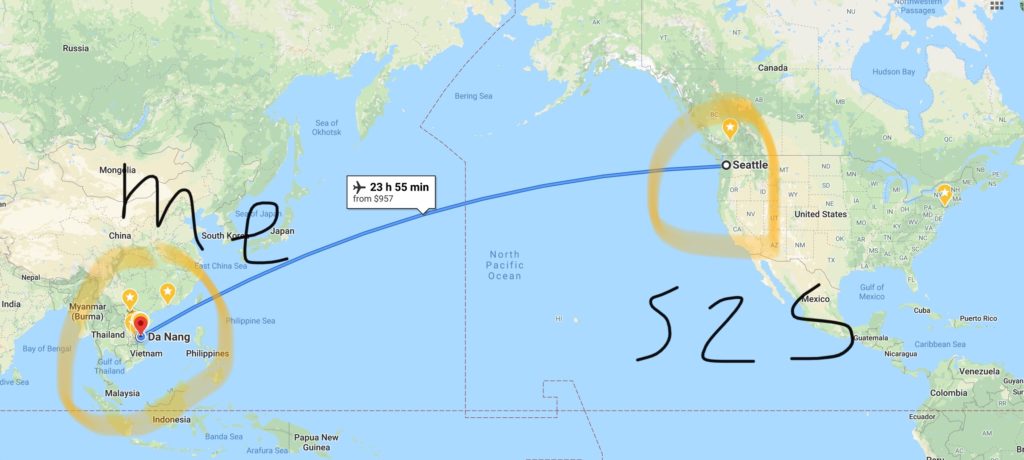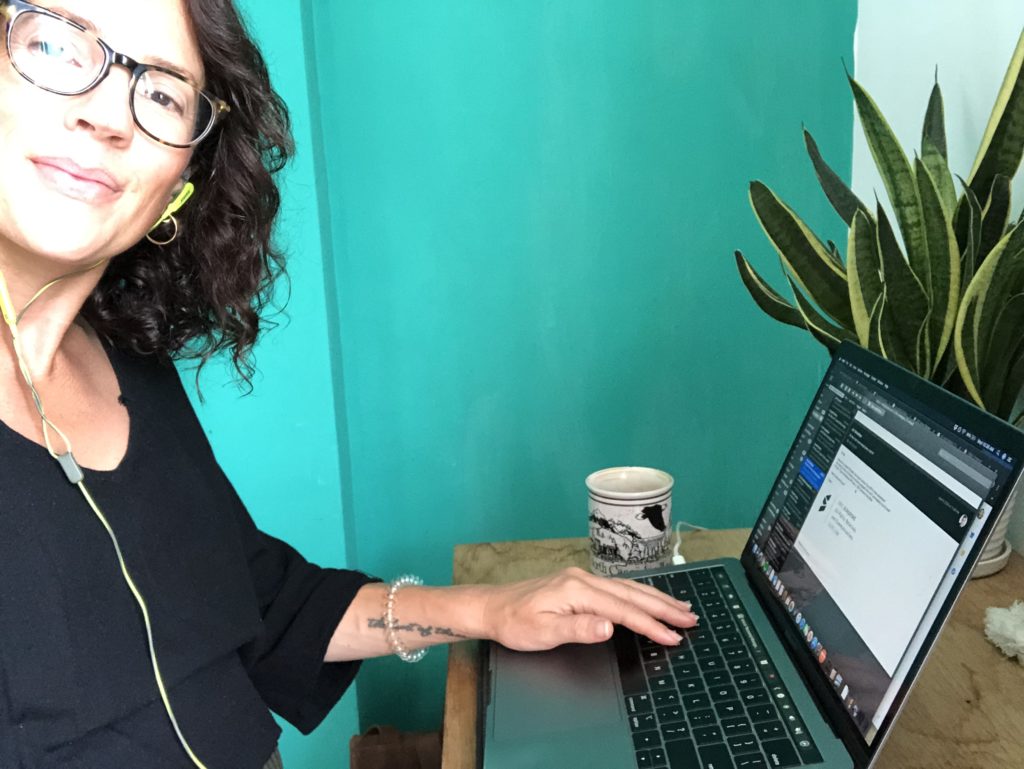In a respectable, and necessary, effort to flatten the curve, many of us have relocated our laptops, sun lamps, favorite mugs, and plant friends to our dining room tables, children’s bedrooms, and nightstands. Depending on your environment, and those with whom you cohabitate, your new work space may be a refreshing change of pace, or utter chaos. Either way, working from home is an adjustment that requires profound patience, flexibility and creativity.

This season I also find myself working from home, as I have been for the past few years. Since 2017, my husband and I have lived in central Vietnam. And each year we’ve moved to a new apartment or house. Though it’s not always ideal, I’ve discovered ways to create a productive and comfortable home work environment, in a new country, 7,024 miles across the Pacific Ocean from the s2s Public Relations and Communications office in Seattle, WA.

In the ‘normal’, non-COVID-19 world, remote employees have the opportunity to integrate their jobs & personal lives by making the time to step outside of the house: attending in-person meetings, frequenting company happy hours, or traveling to conferences. With a touch of intentionality, working in your living space can equate to a balanced lifestyle.

Unfortunately, traditional meetings, conferences and happy hours are not an option when you’re the only Vietnam-based employee. Fortunately, if you’re working COVID-19 remotely or in-another-country remotely, there are strategies, practices and incentives to keep you connected to your projects, team, and clients. So whether you’re abnormally working at home, or doing so as per usual but without the opportunity to leave, my hope is that you’ll find these tips insightful and relevant.
#1 When even a virtual happy hour means coffee for some, cocktails for others…
Sure you can’t meet up at the favored local spot, but there’s always Zoom. Sure, it’s your morning and your colleagues’ late afternoon, but you can still share a casual chat over a variety of drinks. The point is – show up. Make the time to ‘be’ with your colleagues in a non-work capacity. Enjoy a strong cup of coffee while they sip their (coveted) craft beer. Talk about anything other than work. These times are critical to building rapport and maintaining healthy coworker relationships.
#2 We’re 14 hours apart, when will we ever talk?
Differing time zones can be brutal – requiring 5:30am wake-ups or late night calls. Coordinate with your team to select the most optimal times of day for weekly meetings, check-ins, etc. If you remain flexible, you’ll be able to work around each other’s schedules.
#3 My internet is bad… wait, it’s better than yours.
Don’t assume that living outside of the U.S. means your wifi connection will be spotty or unable to perform for professional calls. In fact, there have been many times I’ve found the internet in Vietnam to be more reliable (and far more affordable) than in the states.
#4 An urgent task can be completed in 8+ hours.
This is a major advantage to working in the eastern hemisphere. When a last-minute project or urgent task arrives in my inbox, I generally have 8-10 hours, the length of time until my colleagues wake up and check their email, to complete the project. A win-win for all.
#5 Business development opportunities? Spread your wings!
Seek out opportunities to professionally develop and network in your community. Take advantage of opportunities to learn about your field of work from new professional and cultural perspectives – expanding your knowledge and bringing more value to your team. If you are in a culture that’s not your own, the opportunities to learn are endless!
#6 Attending client meetings from your bed.
Enough said. Just put on a fancy shirt and you’re good to go. Even if it’s 11pm your time.
#7 Be intentional – you are more than your work.
Remember, this isn’t easy. Working from home, particularly from another country, requires daily intentionality. It is far too easy to let weeks go by without directly communicating with your coworkers or clients. Schedule in regular points of virtual connection, via whatever means you prefer, and make these a priority.
So whether you’re a temporary WFH employee, or have a permanent WFH office – you can use your space, technological resources, and time to your professional advantage. And one more, vital, pointer – seek out fellow WFH/international WFH colleagues. Ask them how they’re staying sane, using their kitchens creatively, and maintaining productivity from home. We’re all in this together.